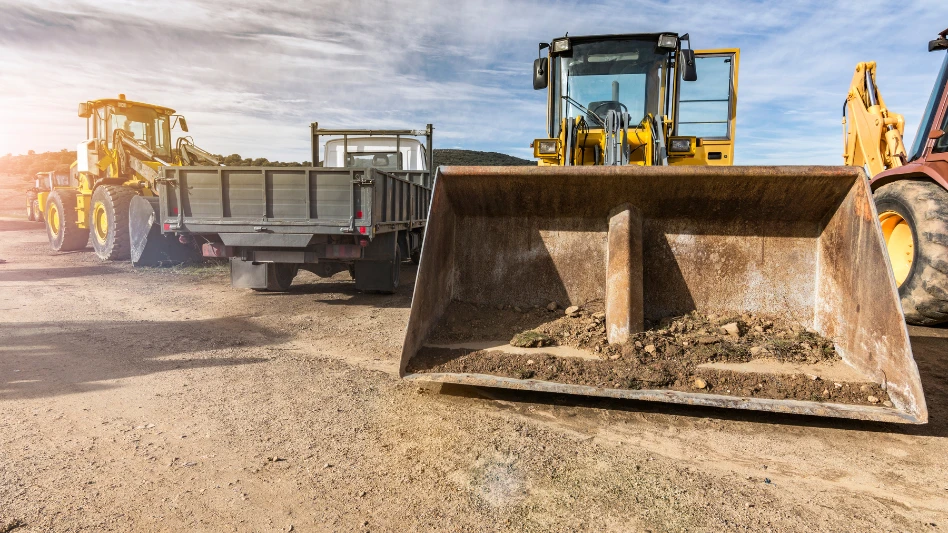 Kevin Gilbride,
Kevin Gilbride,
Group PublisherMark Twain once said that everybody talks about the weather, but nobody does anything about it.
This is especially true for landscape contractors who push snow in the winter. A contractor may have the best plow crews, the most efficient business systems and the latest equipment, but they’re powerless to make it snow.
But what if you could eliminate the risk of an uncooperative winter?
In December, CME Group, the world’s largest and most diverse derivatives exchange, will be bringing to market new snowfall contracts that will allow contractors to manage their financial risk related to the ups and downs of a snowfall season. CME Group has been in the business of providing weather risk management tools since 1999, which enable businesses that could be adversely affected by unanticipated temperature swings or high snowfall, to transfer this risk. Their products include temperature, frost, snowfall and hurricane contracts. Regardless of your market, your contract portfolio or even the size of your operation, these new snowfall contracts will enable people to offset the financial loss of an underwhelming, or an excessive, winter, thus managing their exposure. That’s the beauty in this product. Chicago Weather Brokerage (www.cwbrokerage.com), a firm that specializes in solutions for enabling companies to manage their exposure to unpredictable weather, will be actively brokering these new snowfall contracts.
Take our market in Cleveland where over recent winters we’ve seen our fair share of snowfall ups and downs. Here the average winter snowfall, based on data collected by the National Oceanic and Atmospheric Administration (NOAA), is 55 inches.
In a low-snowfall scenario (see CHART A), a Cleveland contractor wants to protect against the financial loss incurred by a below-average winter. Let’s say, according to his P&L statement, he loses money when it snows 30 inches or less.
To mitigate his risk, the contractor purchases a CME Snowfall contract for $2,000 (the value is based on snowfall probability in the Cleveland market) that protects against a snowfall total of 30 inches or less. That winter it snows a total of 29 inches, according to NOAA figures, and the contractor receives a payout of $10,000.
In a high-snowfall scenario (see CHART B), let’s say that same Cleveland contractor, because of the way his seasonal snow removal contracts are formulated, loses money if it snows in excess of 90 inches. So he purchases three snowfall contracts valued at $1,000 each (a $3,000 total investment) that pays out in the event snowfall totals reach 90 inches. That season it snows 95 inches, according to NOAA data, and he receives a payment of $30,000, which offsets the financial loss he would have incurred due to the excessive snowfall.
In a final scenario that same Cleveland contractor purchases a contract to protect against snowfall totals of 30 inches or less and two contracts protecting against totals of 90 inches or more. That winter the snowfall total for Cleveland, according to NOAA data, is 65 inches. While the CME Snowfall contracts don’t pay out, the contractor still made a profit through his snow removal contracts. The $4,000 investment made prior to the start of winter afforded that contractor the peace of mind that he would be protected in the event that it was a bad winter.
Ultimately, you need to examine your financials, determine your thresholds and ask yourself: Is it worth giving up a little profit to protect against the possibility of a financially devastating winter? How much is your peace of mind worth?
Lawn & Landscape has partnered with the CWB and we are proud to introduce a viable new tool to landscape contractors that will not only offset the risk inherent in this industry, but will allow them to assist their commercial clients to better manager their financial risks in the event of an unfavorable winter. CWB’s WIN product, listed at CME Group, the world’s largest and most diverse derivatives marketplace, is schedule to become available for trading on Dec. 7.
WIN is a win-win proposition for contractors because it normalizes their earnings stream, predictability of revenue and profitability. WIN not only protects contractors’ bottom lines, but it allows them to better serve their customers.
It won’t be long before everybody in the snow and ice removal business is talking about the weather… and finally doing something about it.

Kevin Gilbride is publisher of Lawn & Landscape. You can reach him at kgilbride@gie.net.

Explore the November 2009 Issue
Check out more from this issue and find your next story to read.
Latest from Lawn & Landscape
- Analysis of an entrepreneur
- Terra Nova's Sedum Conga Line variety wins Best of 2024 Perennial award
- Different ways to distribute
- Case's 580EV electric backhoe loader wins Good Design Award
- Davey Tree promotes Dan Herms to VP, GM of Davey Institute
- Caterpillar's Cheryl H. Johnson set for April retirement
- Registration open for sixth annual Lawn & Landscape Technology Conference
- 12 interview questions to help you hire winners





